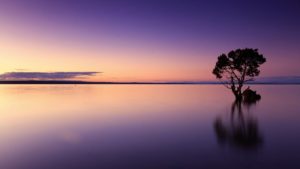The Water
We need water for drinking, cabin Washing and gardening. Animals alive can live without water one amount of water are used up everyday at home in schools factories and almost everywhere we live
Water is a colourless out with no smell. Water has three molecules.
1 WERE BORN WATER COME FROM
Watere potes from seative and likes due to the heat of the sun. I then rises into
the air. When it cool down the clouds itre formed the clouds travel in the direction of
known as Water Cee, Some or low down into form streams and rivers, They flow
mto takes Another part or the water sok into the earth. It is stopped by a lover
or irm and solid rock known as non porous rock, The level at which the water can be
found under the ground is called the water table. When water table rises to the surface of
dig a well to get a note or water
the ground, a spring i formed in a place where the water table is not very deep, we can
- SOME PROPERTIES
WATER
1 WATER TAKES THIS SHAPE OF THE CONTAINER
(ACTIVITIES 151)
Take containers of different shapes like a glass a boltle, a bowl and a saucer. Fill
the glass with water and look at the shape of the water Now pour de same water in
to the other containers, one after another Look at the shape the water takes in each
case
Fig. 45. Wnter takes the shape of the container
7721:04
- WATER FINDS ITS OWN LEVEL
(Activities 15b)
Take a clear plastic tubing of about 1 metre long. Fill it with water by sucking water
in from a container. Hold the ends together and look at the levels of water in the
tube. Now, move one end up or down and see what happens to the two levels of
water.
B
(Fig. 46)
3.
WATER EXERTS PRESSURE.
Keep a thick book in your palm. Your palm feels a push. This is due to the weight of
the book. Water also can exert a similar push due to its weight. We call this Water
pressure.
a)
Water Pressure increases with depth
(Activities 150)
Take a large empty can and drill three holes of the same size on its side, one
below the other as shown in the diagram. Place the can on a brick and keep it
filled with the running water from a tap.
Push
(Fig. 47)
7821:05
The water from the third hole shoots out Tarthest Y and the water from the first
hole shoots out nearest
) At any ghen depth, water pressure is the same in all directions.
Activities is
Drilla few holes of the same size around the side of a can near the bottom. Keep
the lin filled with running water from a tap. Water shoots out to the same
distance thom the can from all the holes
Water exists in three forms, solid, liquid and gas.
(Activities 15e)
Keep a small piece of ice in the lid of a metal can and watch The piece of ice slowly
molts and changes to water lee is the solid form of water. It is hard like a
stone. What hapens when water in a pot or kettle boils? It evaporates to form
water vapour. The steam or water vapon is the gaseous form of water. Cool the
water vapour. It condenses to water. The three forms of water are:-
melis
evaporates
Ice (solid)
Water (liquid)
Vapour (gas)
condenses
freezes
Water floats many things on it.
(Activities 150
Take some water in a bowl and drop pieces of wood, nail, plastic and stone in it.
Which of them float on water? Why? Stone and nail sink as they are denser
(heavier) than water. Solids and liquids which are lighter than water float on water.
Wood, plastic things, cooking oil and other kinds of oil loat on water. Boats are
made of wood to float on water, Ships, though made of steel, float as they are made
lighter than water
- Water dissolves many other substances in it.
(Activities 15p)
Take a small bottle or glass and fill half of it with water. Add a little salt and stir
well.
The salt disappears. It has dissolved in water to form Salt solution. Sait is a soluble
substance. Add some sand in another bottle of water and stir well. It does not
dissolve. Sand is an Insoluble substance. Salt and sugar are soluble in water. Sand
and chalk powder are insoluble.
III. THINGS IN WATER
Water that we get from a river, a lake or a pond may contain:
- a) Insoluble substances
- b) Dissolved substances c) Microbes21:06
- a) Insoluble Substances
file sind and tiny pieces of plants and of animals.
Muddy water contains a lot of suspended matter or small insoluble substance
Suspended matter can be separated from water by filtration
T
FILTRATION:
al
(Activities 15h)
Take a jam jar and cover it with a clean cloth. Keep the cloth is position using a
rubber band. Pour some muddy water slowly, through the cloth.
Clean water is collected in the jar. The mud is left on the cloth. This is called
Filtration. The cloth acts as a filter. In laboratories filter papers are used for
filtration. Dissolved substances cannot be separated by filtration.
- b) Dissolved Substances
Water from rivers, lakes and ponds may contain a number of salts dissolved
them. Dissolved substances can be separated from water by evaporation.
EVAPORATION
ACTIVITIES 151)
Keep a metal sheet on fire. Dissolve some salt in a little water and place the solution
in a metal plate. The water slowly changes to steam. It is evaporated. The salt is left
on the metal plate.
